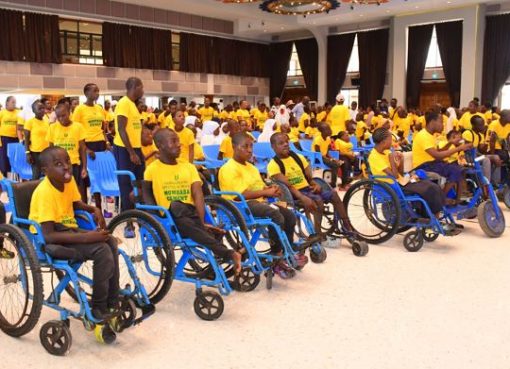Tourism and Wildlife Cabinet Secretary Najib Balala, has launched an elaborate Lion and spotted Hyena Recovery and Action Plan that will ran for the next ten years.
The plan, which runs from 2020 to 2030, aims at sustaining a viable population of lions and spotted hyenas in healthy ecosystems as a heritage for posterity.
Launching the plan in Maasai Mara Game Reserve Thursday, Balala said, lions and hyenas play an important role in the food chain by controlling herbivore populations which if not regulated, would cause an increased competition amongst them and make some to go extinct, thus reducing biodiversity.
Balala added that, lions and hyenas prey on the weakest of the herd and this keeps the population of herd animals resilient and healthy.
“If lions and hyenas did not exist, there would be a symbiotic relationship between parasites and herd animals. This way, parasites could increase and spread throughout the herd, resulting in fewer healthy animals,” said Balala.
He at the same time said that the plan was developed in accordance with the International Union for Conservation of Nature (IUCN), Convention for International Trade of Endangered Species (CITES), and Convention of Migratory Species (CMS) guidelines.
He added that the planning process was participative, transparent and informed by the best available science.
The CS announced that currently, Kenya has about 2,489 lions as compared to a 2018 estimate of about 1,970 lions and called on members of the public who come into conflicts with lions and hyenas not to take the law into their own hands.
“Do not poison them, but instead report livestock predation by the two species to the authorities for processing of compensation claims,” he advised.
The CS stated that there will be no more construction of new camps in all protected areas, be it a national park or a game reserve, without a prior direct permission from the Ministry of Tourism and Wildlife.
He noted that such illegal constructions, such as camps, have been known to destroy the ecosystem and will not be tolerated.
Balala also called on all stakeholders in Maasai Mara game reserve to form a Maasai Mara Management Plan by August 31, 2020, to enable them manage the rich natural heritage properly.
In his remarks, State Department for Wildlife Principal Secretary Professor Fred Segor said the role of the two predators in the ecosystem was crucial and their continued survival is important for the health of other wildlife species.
“Hyenas play an important role as ‘professional garbage collectors’, thereby, helping to clean the environment for the safety of other wildlife species and humans too,” said the PS.
Prof Segor disclosed that the implementation plan was guided by a vision, goal and four broad pillars namely, resilient ecosystems, Engagement of all stakeholders, Evidence-based decision making, and Sustainability and good governance.
Present at the launch were Narok Governor Samuel Ole Tunai, Interior and Coordination of National governmet Chief Administrative Secretary Joseph Boinnet, East African Co-operation Principal Secretary Dr Kevit Desai, Director General of KWS, Brigadier (Rtd) John Waweru, and KWS Board of Trustees Vice Chair, Betty Maitoyo among other conservationists.
By Kennedy Waziri




